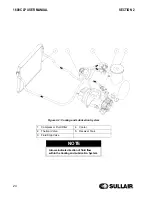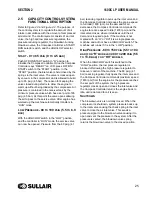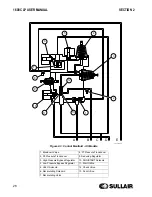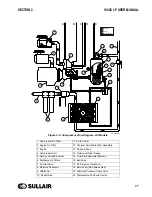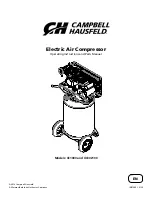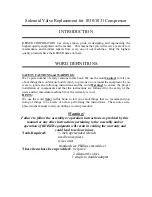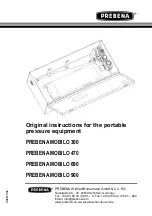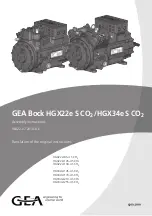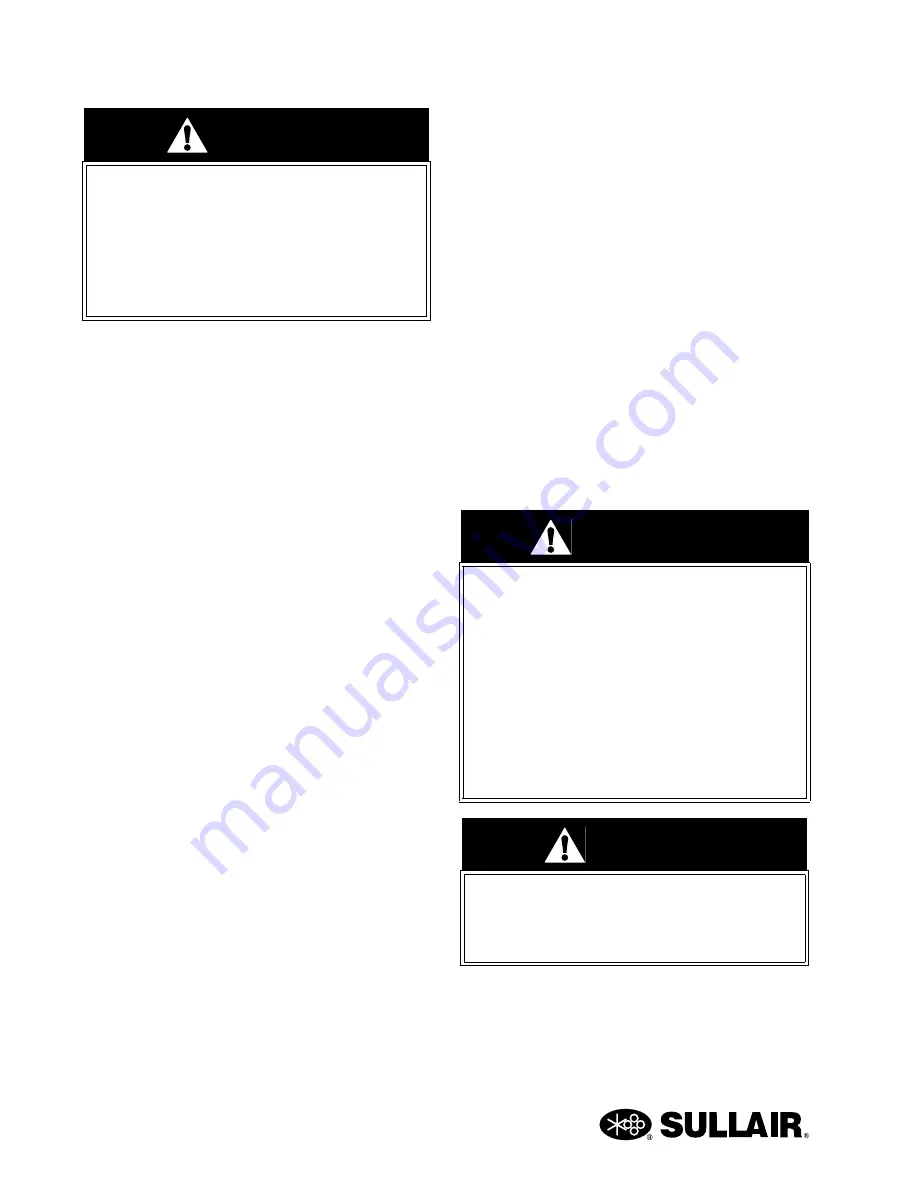
SECTION
1
12
B. DO NOT
use air line anti-icer systems in air lines
supplying respirators or other breathing air utili-
zation equipment and
DO NOT
discharge air
from these systems into unventilated or other
confined areas.
C.
Operate the compressor only in open or ade-
quately ventilated areas.
D.
Locate the compressor so that exhaust fumes are
not apt to be carried towards personnel, air intakes
servicing personnel areas or towards the air intake
of any portable or stationary compressor.
E.
Fuels, fluids and lubricants used in this compres-
sor are typical of the industry. Care should be
taken to avoid accidental ingestion and/or skin
contact. In the event of ingestion, seek medical
treatment promptly. Wash with soap and water in
the event of skin contact. Consult Material Safety
Data Sheet for information pertaining to the spe-
cific fluid.
F.
Wear goggles or a full face shield when adding
antifreeze compound to air line anti-icer systems.
G.
Wear an acid-resistant apron and a face shield or
goggles when servicing the battery. If electrolyte
is spilled on skin or clothing, immediately flush
with large quantities of water.
H.
Ethyl ether used in diesel engine ether starting
aid systems is toxic, harmful or fatal if swallowed.
Avoid contact with the skin or eyes and avoid
breathing the fumes. If swallowed,
DO NOT
induce vomiting and call a physician immediately.
I.
Wear goggles or a full face shield when testing
ether starting aid systems or when adding anti-
freeze compound to air line anti-icer systems.
Keep openings of valve or atomizer tube of ether
starting aid system pointed away from yourself
and other personnel.
J.
If air line anti-icer system antifreeze compound
enters the eyes or if fumes irritate the eyes, they
should be washed with large quantities of clean
water for fifteen minutes. A physician, preferably
an eye specialist, should be contacted immedi-
ately.
K. DO NOT
store ether cylinders or air line anti-icer
system antifreeze compound in operator’s cabs
or in other similar confined areas.
L.
The antifreeze compound used in air line anti-
freeze systems contains methanol and is toxic,
harmful or fatal if swallowed. Avoid contact with
the skin or eyes and avoid breathing the fumes. If
swallowed, induce vomiting by administering a
tablespoon of salt, in each glass of clean, warm
water until vomit is clear, then administer two
teaspoons of baking soda in a glass of clean
water. Have patient lay down and cover eyes to
exclude light. Call a physician immediately.
M.
When handling
DEF
(Diesel Emissions Fluid)
wear protective clothing. Tools and clothing that
come in contact with
DEF
must be cleaned.
INHALATION HAZARD!
Death or serious injury can result from
inhaling compressed air without using
proper safety equipment. See OSHA stan-
dards and/or any applicable Federal, State,
and Local codes, standards and regulations
on safety equipment.
DANGER
-IMPORTANT
It is very important that all electrical connec-
tors are protected from coming in contact
with DEF. If not, there is a risk that DEF will
cause oxidation in the wiring that is not pos-
sible to clean. The resulting oxidation will
result in a wiring/connection failure. Water
and compressed air fail to remove DEF. If a
connector has been in contact with DEF, it
must be changed immediately to prevent
the chemical from further migrating into the
wiring cable harness, which happens at a
speed of 0.6 m/h.
-WARNING
In case of DEF contact with eyes or skin,
the affected area must be thoroughly rinsed
with lukewarm water. If you breathe any
fumes, make sure and breathe fresh air.
Summary of Contents for 02250175-949 R01
Page 2: ......
Page 20: ...SECTION 1 20 ...
Page 42: ...42 NOTES ...
Page 46: ...1600C LP USER MANUAL SECTION 3 46 3 6 ID TANDEM AXLE 02250175 070 r00 ...
Page 48: ...1600C LP USER MANUAL SECTION 3 48 3 8 ID 4 WHEEL 02250175 073 r00 ...
Page 50: ...1600C LP USER MANUAL SECTION 3 50 3 9 ID WITHOUT RUNNING GEAR 02250175 075 r01 ...
Page 52: ...NOTES 52 ...
Page 56: ...NOTES 56 ...
Page 68: ...68 NOTES ...
Page 73: ...NOTES ...
























